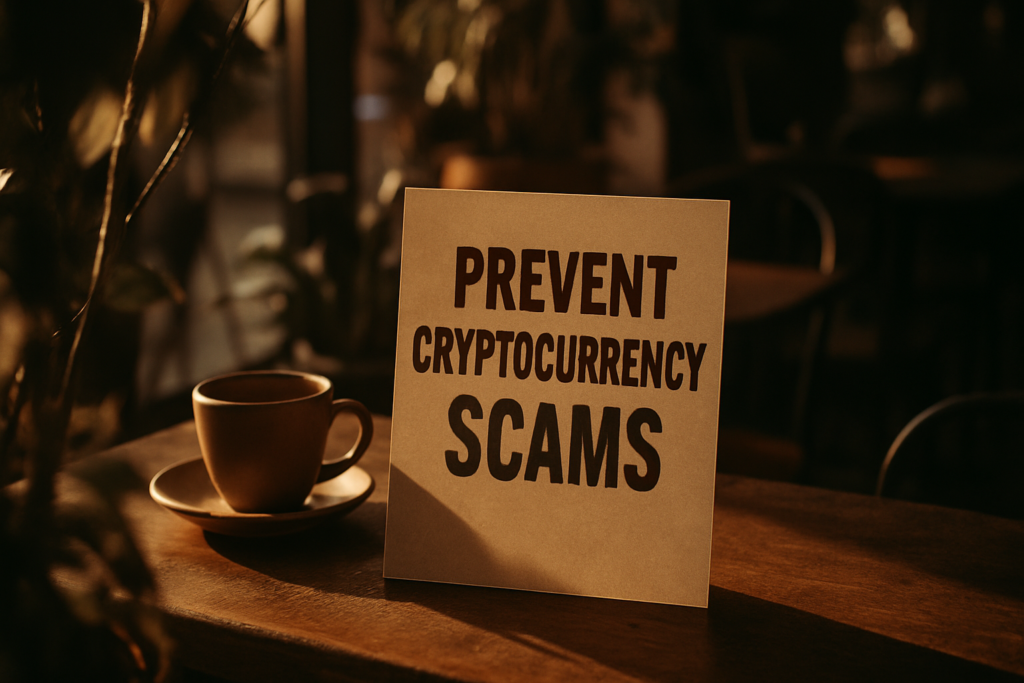Navigating the world of cryptocurrency can be thrilling, but it also comes with its fair share of risks. One of the most prevalent threats investors face is phishing attacks. As an experienced crypto enthusiast, I understand the importance of safeguarding your digital assets against malicious actors looking to exploit vulnerabilities. In this article, I’ll share valuable insights on how to protect yourself against phishing scams in the crypto space.
With the rise of digital transactions and decentralized platforms, the need for robust security measures has never been more critical. By staying vigilant and implementing proactive strategies, you can significantly reduce the risk of falling victim to phishing schemes. Join me as I delve into practical tips and best practices that will help you secure your crypto holdings and navigate the digital landscape with confidence.
Understanding Phishing Attacks in the Crypto Space
Exploring the intricacies of phishing attacks within the realm of cryptocurrency is essential for safeguarding one’s digital assets. Phishing, a deceptive method employed by cybercriminals, aims to trick individuals into divulging sensitive information such as passwords, private keys, or wallet credentials. In the context of the crypto space, these attacks pose a significant threat to investors and traders, potentially leading to the loss of valuable holdings.
Phishing attacks in the crypto sphere often manifest in various forms, including fraudulent emails, fake websites, and social engineering tactics. Cybercriminals craft sophisticated schemes to impersonate legitimate entities like crypto exchanges or wallet providers, luring unsuspecting users into sharing their confidential data. These malicious actors exploit vulnerabilities in human psychology and technological interfaces to manipulate individuals into compromising their security.
Understanding the modus operandi of phishing attacks is crucial for bolstering one’s defenses in the crypto ecosystem. By recognizing common red flags such as unsolicited requests for personal information, grammatical errors in communications, or suspicious website URLs, individuals can mitigate the risk of falling victim to phishing scams. Vigilance, skepticism, and authentication verification are indispensable tools for fortifying one’s resilience against these nefarious tactics.
Common Phishing Techniques Used in Crypto
In the realm of cryptocurrency, scammers employ various phishing techniques to deceive unsuspecting individuals and gain access to their digital assets. Let’s explore two prevalent strategies utilized by cybercriminals in the crypto space.
Spoofed Websites
I have encountered numerous cases where scammers create fake websites that closely resemble legitimate cryptocurrency platforms. These malicious sites often mimic the design and interface of well-known exchanges or wallets to trick users into entering their login credentials or private keys. As a precaution, I always double-check the web address, looking for slight discrepancies or unusual domain extensions, to avoid falling victim to these deceitful schemes.
Phishing Emails
Phishing emails are another common tactic utilized by cybercriminals to obtain sensitive information from cryptocurrency users. These deceptive emails often appear legitimate, prompting recipients to click on malicious links or provide confidential data. Whenever I receive unsolicited emails requesting personal details or instructing urgent action, I scrutinize the sender’s address and hover over links to verify their authenticity. It’s crucial to exercise caution and refrain from disclosing sensitive information via email to safeguard your crypto holdings against such fraudulent attempts.
Best Practices for Protecting Your Crypto Assets
As someone deeply involved in the crypto space, safeguarding my digital assets from phishing attacks is a top priority. To fortify your defenses against such threats, here are some key best practices to consider:
- Enable Two-Factor Authentication (2FA):
Enabling 2FA adds an extra layer of security to your accounts by requiring not just a password but also a second form of verification, such as a code sent to your phone. By implementing 2FA on your crypto exchange accounts and wallets, you can significantly reduce the risk of unauthorized access. - Verify Website URLs:
Before entering any sensitive information or credentials on a website, always double-check the URL for accuracy. Phishing websites often have subtle differences in their URLs compared to legitimate sites. Take the time to verify the web address to ensure you’re interacting with the genuine platform. - Educate Yourself and Stay Informed:
Continuous learning and staying informed about the latest phishing tactics and trends in the crypto space are crucial. By educating yourself on common phishing schemes and being aware of the evolving strategies used by cybercriminals, you can better recognize and avoid potential threats. - Exercise Caution with Emails:
Be cautious when receiving unsolicited emails requesting personal information or instructing urgent actions. Verify the sender’s email address and avoid clicking on any links or attachments in suspicious emails. Legitimate organizations typically do not request sensitive information via email. - Utilize Secure Wallets:
Opt for reputable and secure crypto wallets to store your digital assets. Hardware wallets, such as Ledger or Trezor, offer enhanced security features that can protect your funds from phishing attacks aimed at compromising software wallets or exchanges. - Regularly Update Security Software:
Maintaining up-to-date security software on your devices, including antivirus programs and firewalls, is essential for protecting your crypto assets. Regularly updating your software patches vulnerabilities and strengthens your overall defense against potential threats.
By implementing these best practices and remaining vigilant in your online interactions, you can enhance the security of your crypto holdings and mitigate the risks associated with phishing attacks. Stay proactive, stay informed, and prioritize safeguarding your digital assets in the ever-evolving landscape of cryptocurrency.
Recognizing Warning Signs of Phishing Attempts
In the realm of cryptocurrency, being able to spot potential phishing attempts is crucial to safeguarding your digital assets. As cybercriminals continuously devise new tactics to deceive unsuspecting individuals, it’s important to stay vigilant and recognize the warning signs of phishing attacks. Here are some key indicators to watch out for:
- Unsolicited Requests for Personal Information: Be wary of any messages or emails asking for sensitive data like passwords, private keys, or personal details. Legitimate entities typically do not request such information via unsolicited communications.
- Suspicious URLs: Pay close attention to the website links you interact with. Phishing attempts often involve URLs that mimic legitimate sites but have slight variations or misspellings. Always double-check the web address before entering any confidential information.
- Urgency and Alarmist Language: Phishing messages often create a sense of urgency or panic to prompt immediate action. If you receive a communication pressuring you to act quickly or face dire consequences, it may be a red flag for a phishing attempt.
- Mismatched Branding or Poor Grammar: Watch out for inconsistencies in branding, logos, or overall design of emails or websites claiming to be from reputable organizations. Additionally, grammatical errors or awkward language in communications can indicate fraudulent activity.
- Unexpected Attachments or Links: Exercise caution when encountering unexpected attachments or links in emails or messages. Clicking on unfamiliar links or downloading attachments from unknown senders can expose your device to malware or phishing attempts.
By familiarizing yourself with these warning signs and maintaining a skeptical mindset when engaging with digital communications, you can significantly reduce the risk of falling victim to phishing attacks in the cryptocurrency space. Stay alert, verify the legitimacy of sources, and prioritize security practices to protect your valuable assets from malicious actors.






